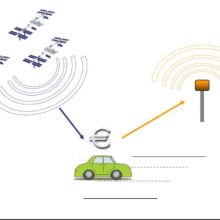
The EU Commission calls on its member states to levy tolls by 2027 on the basis of actual kilometers traveled by all road users. Thus the EU adopts the so-called Wiesbaden model, which was compiled in a study by the consultancy company TransCare in 2013.
“The roads today have irregular traffic flows. Therefore there must be a goal to improve traffic circulation and to equalize peak-time traffic”, explains Ralf Jahncke, Managing Director of TransCare. Contrary to the vignette model favored by Transport Minister Dobrindt for Germany, the solution now required by the EU, facilitates the control of traffic and ensures a cause-fair allocation of the increased mobility costs.
The Wiesbaden model provides differentiated toll rates, depending on the type of traffic involved: for trucks, rates are dependent on the load factor at 8 to 16 cents, for buses rates are at 8 cents and for cars and motorcycles at 2 cents per kilometer. Whoever wants to use the busy roads at peak times pays a higher rate. Anyone using less-busy side roads is rewarded with a discount. In addition, consideration is made if several people are travelling in the same car and if E-mobiles are being used. The latter is also taken into account in the EU model. In order to avoid any additional costs compared to the average car use today, according to the TransCare study, mineral oil and motor vehicle taxes are to be reduced in return.
Based on this model, 28.1 billion Euros could be generated annually. The share of toll road charges received from passenger vehicles would amount to 12.1 billion Euros. This would be financed to 80% by the reduced car tax for passenger vehicles and the reduction of fuel tax for all vehicles. For bridge and road construction and maintenance, there is a remaining budget of 14.4 billion Euros, after deducting the cost of operating toll roads (EUR 2.1 billion), the tax refund (EUR 10.1 billion) and the reimbursement of the toll surplus. “This means that compared to the current budget, there would be approximately an additional 4 billion Euros available for the modernization of the German road network – without having to further charge to the average passenger car user”, explains traffic expert Ralf Jahncke.

